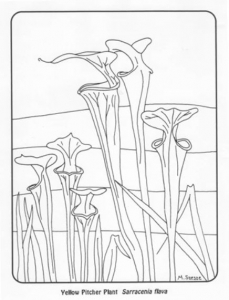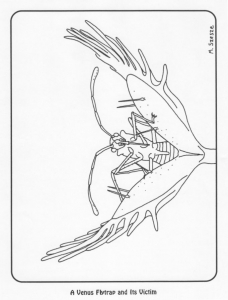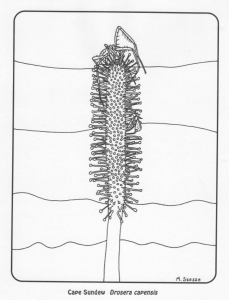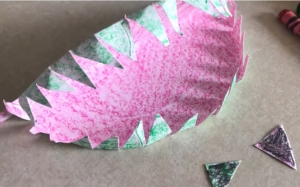Carnivorous plants are meat-eating plants! They’re attractive for their peculiar appearance, but known for the unusual ways they get their nutrients: through eating their prey.
Most plants use photosynthesis to create energy and use their roots to absorb nutrients in the soil. In areas where soil is nutrient poor, some plants have evolved to get their food from other places! These plants are called carnivorous, meaning they consume insects to provide themselves with the necessary nutrients to grow and thrive. There are 66 species of carnivorous plants in the world, and North Carolina is home to 36!
These meat-eating plants use various ways to attract and catch insects. The Venus Flytrap uses trigger hairs in their jaws and snap shut when an insect is triggers these hairs by moving around. Sundews and butterworts have sweet-smelling sticky fluid that attracts bugs, then curls up and traps their prey. Pitcher plants also attract their prey with a sweet fluid, and drown the insect Bladderworts use suction traps to get their food!
Fire helps these species be successful. These small plants need lots of sunlight and can be easily out-shaded in dense forests. When a fire comes through, it opens up the mid-story for sunlight to reach the forest floor, to reach these plants.
Venus Flytraps have become a symbol for North Carolina and unfortunately, due to poaching the plant from its native habitat, the species’ population is now vulnerable. You can find venus flytraps in a small area around Wilmington, North Carolina.
Activities
Carnivorous Coloring Sheets
Pitcher Plant Venus Flytrap Sundews






